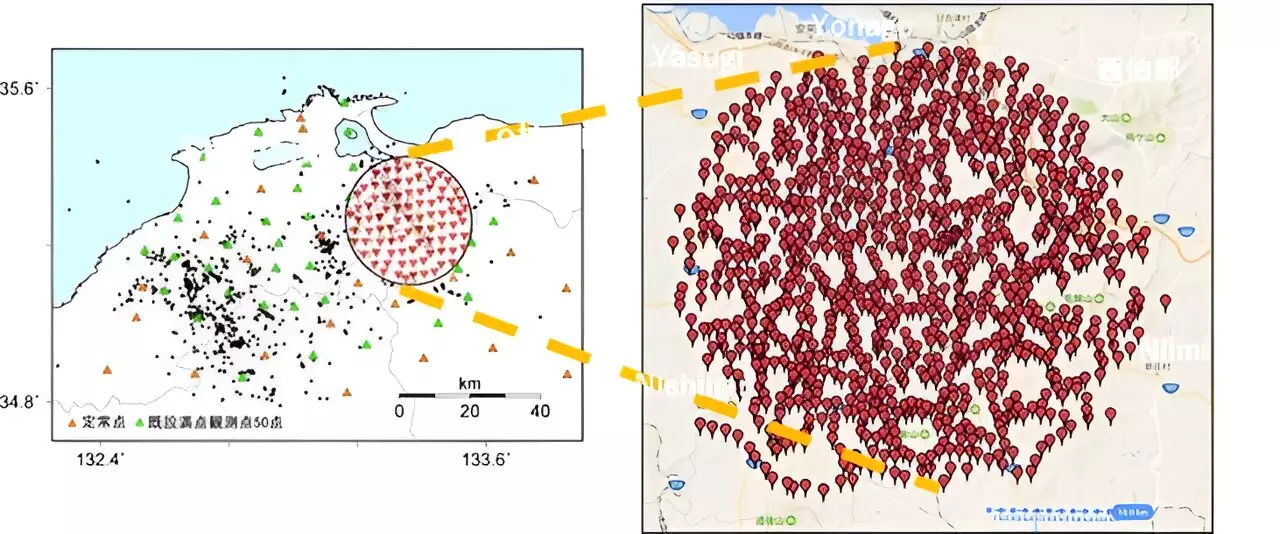Japan’s geographical positioning along the Pacific Ring of Fire renders it particularly susceptible to seismic activity, making it one of the most earthquake-vulnerable nations on the planet. It experiences thousands of minor tremors annually, alongside a persistent fear of catastrophic seismic events. While the exact timing of significant earthquakes remains elusive, geoscientists believe that the analysis of minor seismic incidents could illuminate the subterranean processes leading to these large-scale disasters. A recent study published in *Nature Communications* delves into this complex relationship, exploring how fault strength influences seismic phenomena and potentially enhances predictive capabilities.
At the heart of this research lies the concept of the b-value, a critical parameter in seismology that describes the frequency-magnitude distribution of earthquakes. According to Professor Satoshi Matsumoto, the study’s lead author and the head of Kyushu University’s Institute of Seismology and Volcanology, the b-value serves a pivotal role in determining the likelihood of larger earthquakes. A lower b-value correlates with a higher frequency of significant seismic events, while a higher b-value signifies a predominance of smaller quakes. By closely examining the seismic history and ongoing activity, researchers hope to elucidate the enigmatic dynamics of fault strength and its connection with earthquake magnitudes.
The groundwork for this comprehensive study was laid in the aftermath of the 2000 Western Tottori Earthquake, which registered a magnitude of 7.3. Researchers focused on a meticulous analysis of the seismic activity surrounding the epicenter of this event. With the deployment of over a thousand seismic sensors in the affected region, they achieved unprecedented observational accuracy. This extensive data collection enabled them to monitor the slightest seismic movements and ascertain the orientation of individual faults within the Earth’s crust, paving the way for substantial insights into the underlying mechanics of fault lines.
Matsumoto noted that even decades after the initial event, the region continued to experience hundreds of aftershocks, many of which remain imperceptible to the general population. The granularity of data gathered through the extensive sensor network was instrumental in assessing the stress fields—essentially, the varying directions and magnitudes of stress exerted on each fault line at the time of failure. This analysis allowed researchers to classify faults as either strong or weak, fundamentally altering the understanding of seismic risk in the region.
A critical finding of this research indicates that under specific stress conditions, certain fault orientations are predisposed to slip, suggesting that faults exhibiting favorable directions are more robust and will require greater stress to trigger an earthquake. Conversely, the weaker faults, which tend to have less favorable orientations, are likely to fail more readily. The implication of this distinction lies in the understanding that weaker faults might ultimately relieve stress before a truly significant earthquake can occur, thereby diminishing the likelihood of large-scale seismic disasters in certain regions.
Moreover, the researchers established a noteworthy correlation between fault strength and b-value metrics: stronger faults exhibited lower b-values, indicating an increased likelihood of major earthquakes, while weak faults demonstrated higher b-values, suggesting that massive earthquakes are less probable. The researchers articulated that through understanding these dynamics, particularly with regard to fault strength and orientation, future models of seismic prediction may become more reliable.
While the aspiration for precise earthquake prediction remains a formidable challenge, the findings from this study underscore a potential pathway toward greater accuracy in forecasting seismic events. By harnessing data regarding fault orientation and strength, as well as analyzing b-values, scientists may inch closer to understanding the critical juncture at which additional stress might trigger fault slippage. As Professor Matsumoto aptly concludes, while it may never be possible to predict earthquakes with pinpoint accuracy, advancements in seismic research will fortify preparedness strategies, ultimately benefitting populations vulnerable to these natural disasters. In light of Japan’s ongoing seismic legacy, continued exploration in this field remains vital for safeguarding lives and property in the face of an unpredictable nature.


Leave a Reply